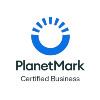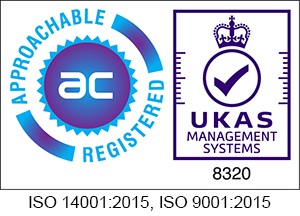As the price of commodities such as paper, plastics and chemicals continue to rise there is a clear temptation to buy products which offer a price advantage over those that we have traditionally purchased under existing arrangements.
There is however a danger in assuming that the price offered today on this type of product is sustainable in the long or even short term. Smaller paper manufacturers for example have the ability to spot buy raw materials but without understanding fully the scarcity of that product in the marketplace it does offer the cleaning contractor uncertainty.
For those that can be light-footed and change the brand offered on almost a monthly basis, this kind of trading does have advantages. Despite the valid costs savings that spot buying may generate, there are a number of significant variables that may be worth considering before taking this route.
There will certainly be more internal effort needed to constantly change ones invoicing and pricing functions but for those who demand the very lowest price at any particular point in time, this method offers a solution.
For those that need the security and continuity of supply then the traditional procurement methods do offer the best solution.
Paper Manufacturers have experienced unparalleled increases in electricity costs over the last 9 months. With one telling me recently that their energy costs had risen from £750,000 to £7.5m per month. Future energy costs are uncertain, and predictions are that they will continue to rise as winter approaches.
In a market unlike any I have seen in the last 35 years I would suggest that a two-pronged strategy with the same supplier could give the flexibility needed to operate under current conditions. Using the same supplier for both options, rather than spot buying yourself does make sense as the supplier should have a deeper understanding of the marketplace, the manufacturers involved and where there are deals to be done.
Additional price increases are inevitable but being able to offer your client a low-cost alternative to traditional products could well be the answer to the very challenging times we see ahead even if there is no guarantee of future availability.
As a distributor we would suggest a product-by-product strategy for each of our clients individually that focuses on the requirements of, their clients. The availability of an online ordering system that allows the client to manage budgets and gives instant price and stock level visibility is a preference but not essential.
In my opinion this strategy offers the best way forward as the plan incorporates both previous discussed buying options and has proven success.
Posted: 15/10/2022
There is however a danger in assuming that the price offered today on this type of product is sustainable in the long or even short term. Smaller paper manufacturers for example have the ability to spot buy raw materials but without understanding fully the scarcity of that product in the marketplace it does offer the cleaning contractor uncertainty.
For those that can be light-footed and change the brand offered on almost a monthly basis, this kind of trading does have advantages. Despite the valid costs savings that spot buying may generate, there are a number of significant variables that may be worth considering before taking this route.
There will certainly be more internal effort needed to constantly change ones invoicing and pricing functions but for those who demand the very lowest price at any particular point in time, this method offers a solution.
For those that need the security and continuity of supply then the traditional procurement methods do offer the best solution.
Paper Manufacturers have experienced unparalleled increases in electricity costs over the last 9 months. With one telling me recently that their energy costs had risen from £750,000 to £7.5m per month. Future energy costs are uncertain, and predictions are that they will continue to rise as winter approaches.
In a market unlike any I have seen in the last 35 years I would suggest that a two-pronged strategy with the same supplier could give the flexibility needed to operate under current conditions. Using the same supplier for both options, rather than spot buying yourself does make sense as the supplier should have a deeper understanding of the marketplace, the manufacturers involved and where there are deals to be done.
Additional price increases are inevitable but being able to offer your client a low-cost alternative to traditional products could well be the answer to the very challenging times we see ahead even if there is no guarantee of future availability.
As a distributor we would suggest a product-by-product strategy for each of our clients individually that focuses on the requirements of, their clients. The availability of an online ordering system that allows the client to manage budgets and gives instant price and stock level visibility is a preference but not essential.
In my opinion this strategy offers the best way forward as the plan incorporates both previous discussed buying options and has proven success.






